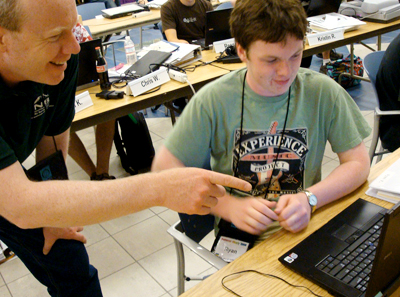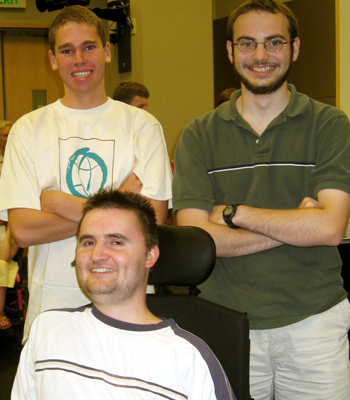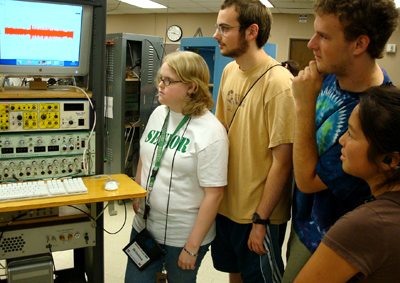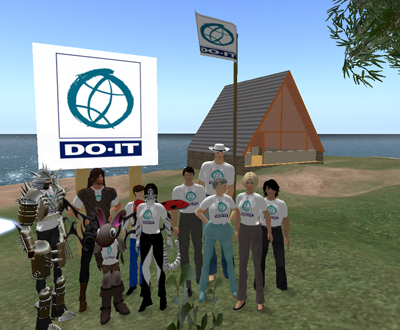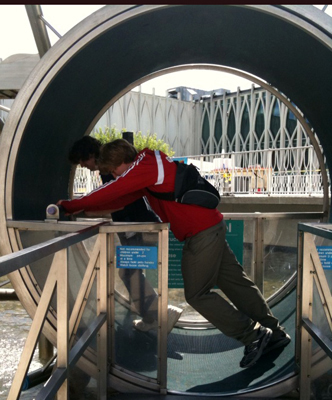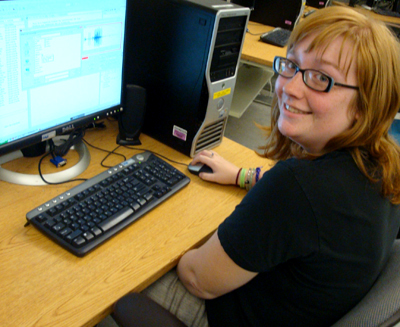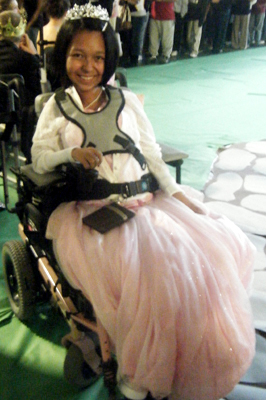Fall is here, many of you are back in school again, and I wanted to share with you a question posed by a DO-IT Ambassador in our Internet discussion forum and some of the responses, so that you can get the flavor of the many rich conversations the DO-IT community has online.
DO-IT Ambassador: I think you should be given as many sittings as other students. So if they get only one sitting you should too. More than one could give you an unfair advantage. But perhaps you need to look into why the test is taking you that long.
DO-IT Ambassador (posted original question): The main reason my examinations take so long is that in accounting my examinations usually require me to perform calculations. The tests contain a lot of multiple-choice questions. I use my portable PC to do the calculations. It's equipped with both Excel and Windows Calculator. For a multi-step problem I like to use Excel to perform the calculations for two reasons: (1) It allows me to check my work and see what steps I have already taken. (2) I can edit my formulas and reduce the chances that I will have to start the problem all over again.
Even with all those features, all too frequently, my calculations don't match the answers I have to choose from. Sometimes, it takes me several tries to determine where I am making my mistake.
DO-IT Mentor: How much time did the other students get for the exam? How long do you think it would have taken you to complete the test? It seems that the fact that your answers don't match the choices is not a disability-related problem, but one that every student could run into. Traditionally, a common reasonable accommodation is for the student with a disability to be given twice the amount of time the other students get. If you need even more time than that, you might reconsider whether you are using the most efficient method.
DO-IT Mentor: The fundamental question you have to ask and answer is whether or not you're taking longer on the test is a direct result of your disAbility and is something that can be reasonably accommodated. You'd want to prove that your accommodation is resolving a problem created by your disAbility and is not artificially compensating for a lack of knowledge to answer the questions.
The second thought I had was on test taking strategies. Sometimes with multiple choice tests, it is not necessary to work out every answer down to the last digit. Often, by estimating, looking at orders of magnitude, or the units that answers are presented in, the answer can be found without completing all of the calculations. If the professor is presenting some questions in multiple choice format rather than asking you to show your work and present all of the steps of your calculations, they may be expecting you to use more general knowledge of accounting to determine the correct answer. It might be helpful to discuss this with the professor or the TA [teaching assistant] and get some advice on test taking strategies.
DO-IT Mentor: I get time-and-a-half to take my tests, and I'm considering asking for double time because I have difficulties with both coordination and severe test anxiety. I personally don't like the idea of breaking the test up into two pieces because it's too tempting to take a peek at notes during the interim—an unfair advantage (and cheating, which is not cool!). That said, I take breaks during my tests, especially the long ones! At [my school], we're allowed to take our tests to the proctor or disability resource services (DRS) staff person and take breaks. This break time does NOT go on our test time. For me, breaks are a must because I get so worked up that either my head will explode or I'll have a nervous breakdown and start crying... neither situation would be pretty! :) I take a break and eat something in the DRS office or talk to one of the DRS people for a while; then, when I feel better, it's back to work.
On the other hand, you bring up a good point about fatigue. I'd probably go take a nap in DRS or in the lounge near DRS, but many people are not as informal as I am. Thoughts???
DO-IT Ambassador: In college I have never had to take breaks. However, in taking the SAT Reasoning Test, I was able to take breaks as part of the accommodations. I'm not sure if it transfers over to college, but it should be allowed if it is an appropriate accommodation.
DO-IT Mentor: One possible solution to the problem of the student having a chance to look at notes between test sessions would be to plan ahead of time that the test would be given in two parts. Then the student would only be given half of the questions at each test session. Do you think a professor [would] agree to that kind of an arrangement?
DO-IT Ambassador: I think that would depend a lot on the makeup of the exam. Sometimes one question offers clues to other questions. Thinking back, I believe I would have had a difficult time convincing professors that an exam needed to be taken over two periods. There just seems like too much opportunity to have a second cram session. I am not saying anyone would do that; we're all honest and responsible people. However, it is my opinion that the less suspicious situations one can be in the better.
DO-IT Ambassador: As far as calculations go, if your problem is related to using the calculator, you could ask the person proctoring the test to help you. I recently took a math test in the DRS office, and the test proctor typed into the calculator what I told her to, and then she read off the answer for me to write on the test.
DO-IT Ambassador (posted original question): I think the main problem is keeping track of the steps I have taken during calculations. This is why I never ask the person proctoring the examination to enter information into a calculator for me. There are several advantages to using a program like Excel or Windows Calculator:
- I can more easily keep track of information, especially when using Excel. I can look at the last calculations I did and find out what I need to do next.
- I can write down the numbers as the proctor is reading them to me. This is faster than having the proctor read the test several times and trying to remember what to tell him to enter. Even with programs like Windows Calculator or Excel, I still lose track of information. This is what slows me down during examinations.
DO-IT Mentor: Perhaps you can arrange to take a five-minute break every hour or a ten-minute break every two hours before you take your next long exam.
Also, have you been able to determine the main reason you are unable to get an answer that matches one of the choices? For example, are you making typographical errors when entering the numbers or formulas? Or are you making a thinking error when first deciding how to approach the problem? Knowing the reason for the mistakes might help you figure out how to prevent them.
DO-IT Ambassador (posted original question): I have not completely determined what is keeping me from getting an answer that matches the options on the examination. However, I have a few theories:
It could be a problem working with formulas. Another part of the problem could be with the order of operations. Part of the problem could also be drowsiness. If I spend too much time working on an examination, I start getting drowsy and have trouble concentrating on what I'm doing.
DO-IT Mentor: One thought would be to sit down with a TA and go over your problem solving process. That would help you identify where exactly the issue is coming from. That would probably help you determine the solution.
DO-IT Mentor: There aren't many people on the planet that can concentrate for more than three hours straight without losing concentration—whether at work or in tests. In those situations I find it works best to periodically take thirty-second breaks. Put down the pencil (or step away from the computer), focus on taking deep breaths, and do some stretches. You can determine what works best for you. Also, begin to monitor yourself, to know when your lack of concentration is crossing a line where you become less effective, then addressing that.
Sometimes people think this kind of technique slows them down too much to get the work done. Maybe it does for some, but for me it actually makes the rest of my time much more efficient. School teaches a lot more than just literal knowledge; it also forces someone to learn more practical skills. That's not to say there aren't disAbilities that make this kind of long testing difficult and thus very justifiably accommodated.
Key flick and tap gestures used with the iPhone:
- Flick Right = Move to next item
- Flick Left = Move to previous item
- Flick Down = Move to next item using rotor setting
- Flick Up = Move to previous item using rotor setting
- Three finger flick down = Scroll up one page
- Three finger flick up = scroll down one page
- Three finger double tap = toggle speech on/off
- Two finger double tap = Start and stop the current action
- Double tap = Activate or open the selected item
- Tap = Speak item
- Two finger flick up = Read all text from top of screen
- Two finger flick down = Read all text from current location downward
- Three finger triple tap = Turn screen curtain [privacy] off/on
